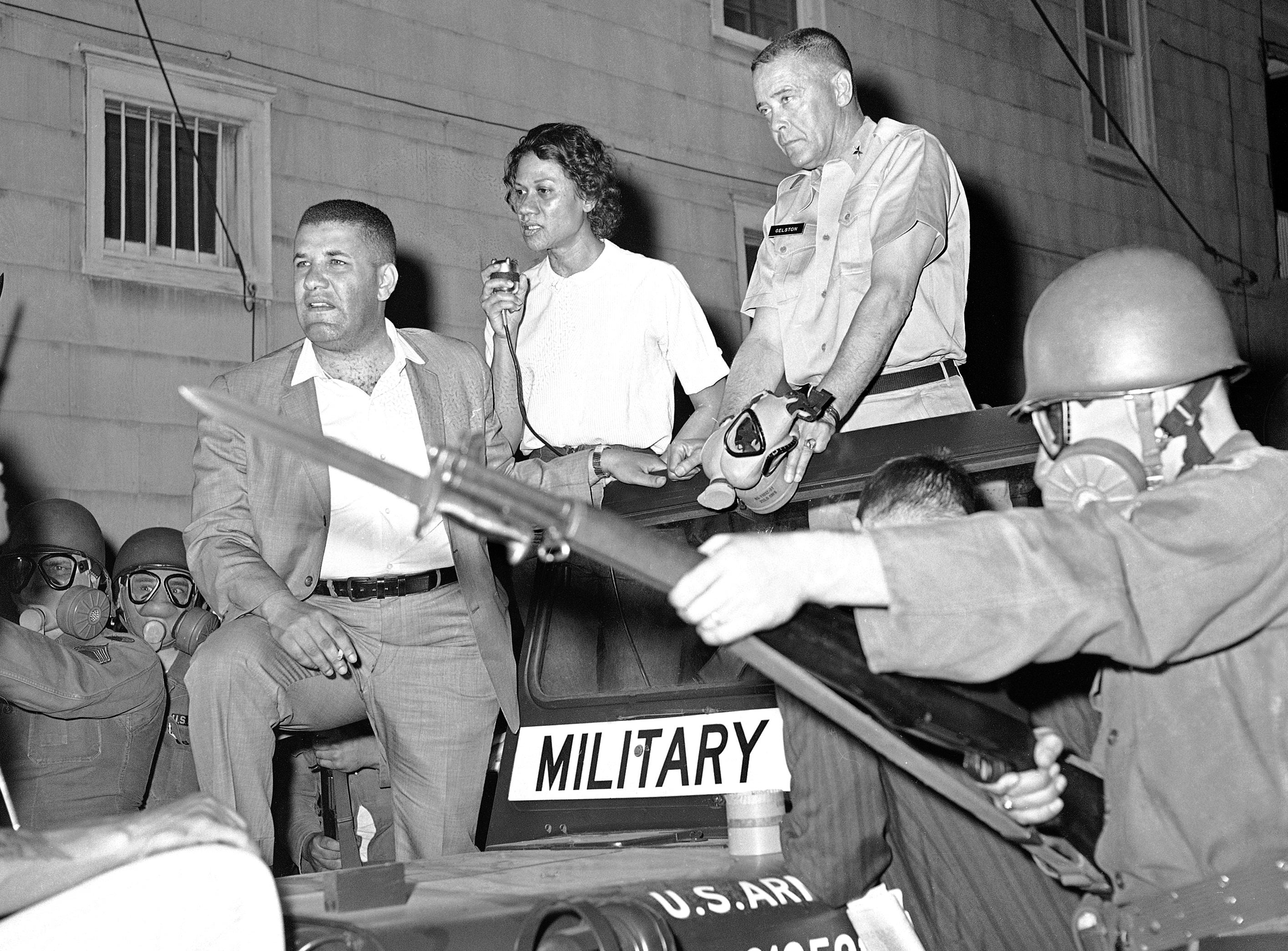Gloria Richardson, civil rights pioneer, dies at 99
Civil rights pioneer Gloria Richardson has died

Your support helps us to tell the story
From reproductive rights to climate change to Big Tech, The Independent is on the ground when the story is developing. Whether it's investigating the financials of Elon Musk's pro-Trump PAC or producing our latest documentary, 'The A Word', which shines a light on the American women fighting for reproductive rights, we know how important it is to parse out the facts from the messaging.
At such a critical moment in US history, we need reporters on the ground. Your donation allows us to keep sending journalists to speak to both sides of the story.
The Independent is trusted by Americans across the entire political spectrum. And unlike many other quality news outlets, we choose not to lock Americans out of our reporting and analysis with paywalls. We believe quality journalism should be available to everyone, paid for by those who can afford it.
Your support makes all the difference.Gloria Richardson, an influential yet largely unsung civil rights pioneer whose determination not to back down while protesting racial inequality was captured in a photograph as she pushed away the bayonet of a National Guardsman, has died. She was 99.
Joe Orange, her son-in-law, said Richardson died Thursday in New York
“She was not ill. She died peacefully in her apartment in New York in her sleep," said Orange, who is married to Richardson's daughter, Donna.
Richardson was the first woman to lead a prolonged grassroots civil rights movement outside the Deep South. In 1962, she helped organized and led the Cambridge Movement on Maryland s Eastern Shore with sit-ins to desegregate restaurants, bowling alleys and movie theaters in protests that marked an early part of the Black Power movement.
“I say that the Cambridge Movement was the soil in which Richardson planted a seed of Black power and nurtured its growth," said Joseph R. Fitzgerald, who wrote a 2018 biography on Richardson titled “The Struggle is Eternal: Gloria Richardson and Black Liberation.”
Richardson became the leader of demonstrations over bread and butter economic issues like jobs, health care access and sufficient housing.
“Everything that the Black Lives Matter movement is working at right now is a continuation of what the Cambridge Movement was doing," Fitzgerald said.
In pursuit of these goals, Richardson advocated for the right of Black people to defend themselves when attacked.
“Richardson always supported the use of nonviolent direct action during protests, but once the protests were over and if Black people were attacked by whites she fully supported their right to defend themselves,” Fitzgerald said.
Richardson was born in Baltimore and later lived in Cambridge in Maryland's Dorchester County — the same county where Harriet Tubman was born. She entered Howard University when she was 16. During her years in Washington, she began to protest segregation at a drug store.
In 1962, Richardson attended the meeting of the Student Nonviolent Coordinating Committee in Atlanta and later joined the board.
In the summer of 1963, after peaceful sit-ins turned violent in Cambridge, Gov. J. Millard Tawes declared martial law. When Cambridge Mayor Calvin Mowbray asked Richardson to halt the demonstrations in exchange for an end to the arrests of Black protesters, Richardson declined to do so. On June 11, rioting by white supremacists erupted and Tawes called in the National Guard.
While the city was still under National Guard presence, Richardson met with U.S. Attorney General Robert Kennedy to negotiate what became informally known as the “Treaty of Cambridge.” It ordered equal access to public accommodations in Cambridge in return for a one-year moratorium on demonstrations.
Richardson was a signatory to the treaty, but she had never agreed to end the demonstrations. It was only the passage of the Civil Rights Act of 1964 that began to resolve issues at the local level.
She was one of the nation's leading female civil rights' activists and inspired younger activists who went on to protest racial inequality in the late 1960s and into the 1970s.
Richardson was on the stage at the pivotal March on Washington in 1963 as one of six women listed as "fighters for freedom” on the program. However, she was only allowed to say “hello” before the microphone was taken.
The male-centric Black Power movement and the fact that Richardson's leadership in Cambridge lasted about three years may have obscured how influential she was, but Fitzgerald said she was well-known in Black America.
“She was only active for approximately three years, but during that time she was literally front and center in a high-stakes Black liberation campaign, and she’s being threatened," Fitzgerald said. "She’s got white supremacist terrorists threatening her, calling her house, threatening her with her life.”
Richardson resigned from Cambridge, Maryland, Nonviolent Action Committee in the summer of 1964. Divorced from her first husband, she married photographer Frank Dandridge and moved to New York where she worked a variety of jobs, including the National Council for Negro Women.